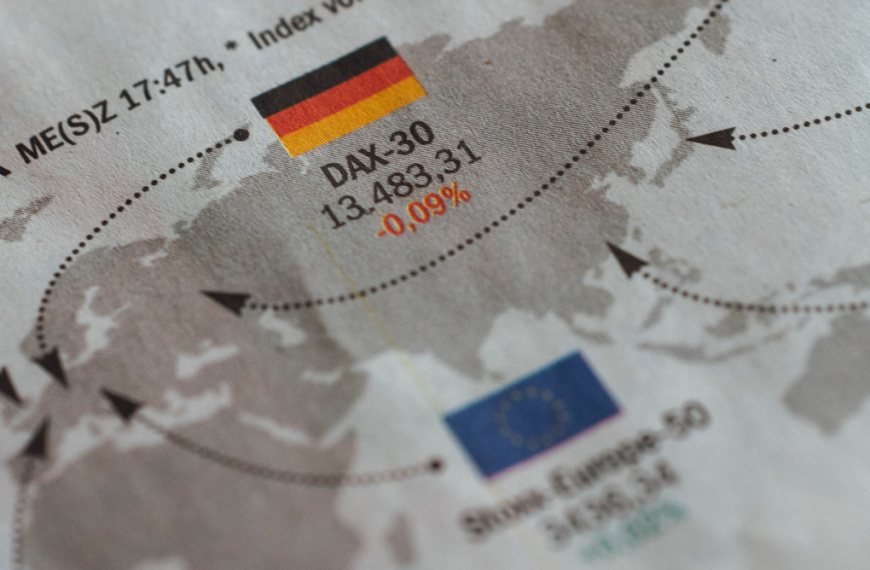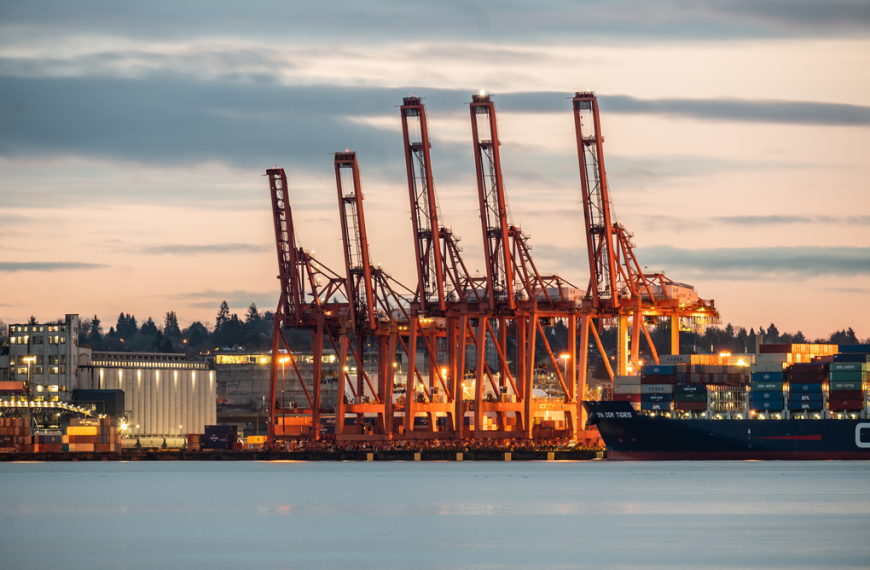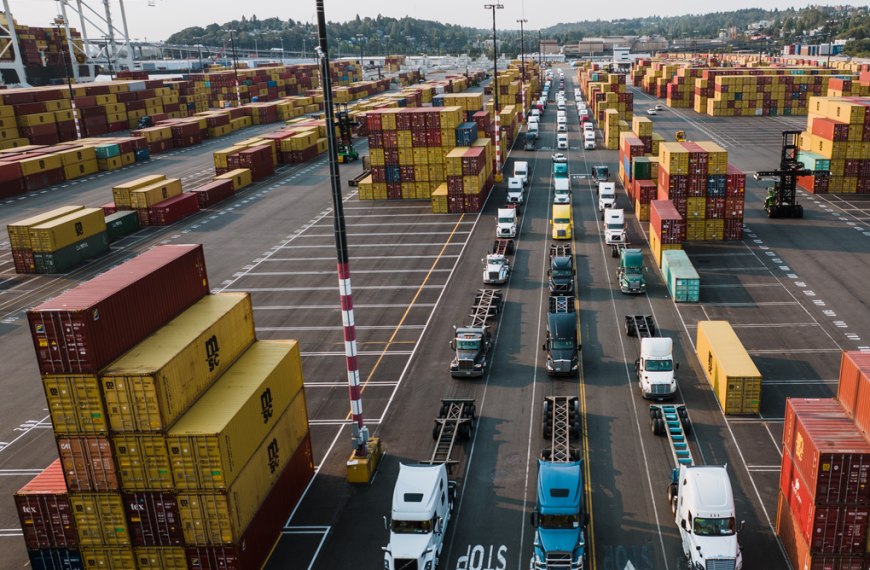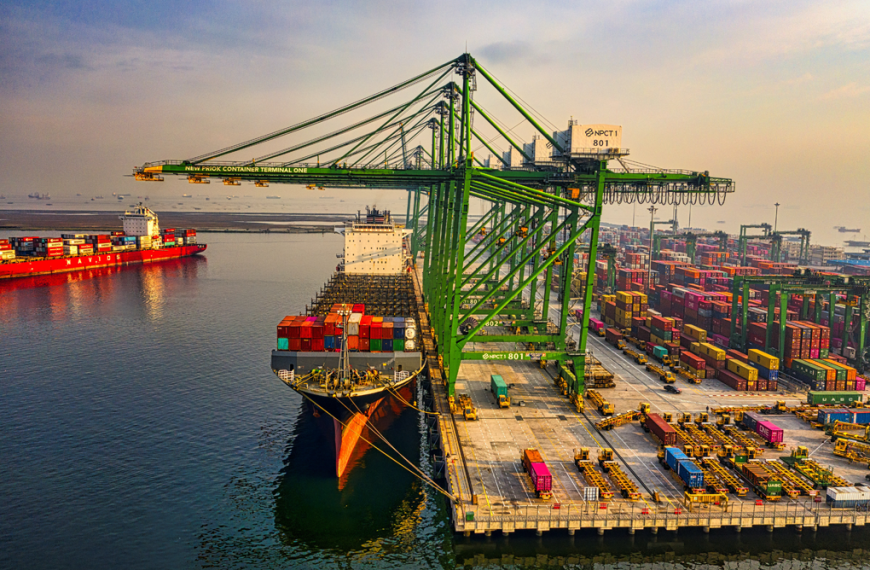The potential of drone freight delivery as a transformative force in the logistics industry. Explore how this game-changing innovation revolutionizes supply chain management, last-mile delivery, and job roles. Discover the cutting-edge technology behind drone design, navigation systems, and payload capacity. Gain insights into the safety measures and regulations governing drone freight delivery. Overcome operational challenges with innovative solutions and embrace the seamless integration of drones in logistics. Step into the future of freight transportation and explore the limitless possibilities of this revolutionary solution.
- Introduction to Drone Freight Delivery: Revolutionizing the World of Freight Transportation
- Benefits of Drone Freight Delivery: Revolutionizing the World of Freight Transportation
- Safety and Regulations: Ensuring Secure Drone Freight Delivery in the World of Freight Transportation
- Unveiling the Technology Behind Drone Freight Delivery: Revolutionizing the World of Freight Transportation
- Navigating Operational Challenges and Unleashing Solutions in Drone Freight Delivery
- Unleashing the Transformative Impacts of Drone Freight Delivery on the Logistics Industry
- Exploring Future Prospects and Key Considerations in Drone Freight Delivery
- Frequently Asked Questions (FAQs)
- Related Articles
Introduction to Drone Freight Delivery: Revolutionizing the World of Freight Transportation
Welcome aboard the future of freight transportation, where the skies are abuzz with the promise of speed, efficiency, and innovation. In this blog post, we dive into the fascinating realm of Drone Freight Delivery, a disruptive force that is reshaping the freight industry as we know it. Strap in as we explore the possibilities and potential it brings, overcoming challenges faced in the freight industry while paving the way for a new era of logistics.

Benefits of Drone Freight Delivery: Revolutionizing the World of Freight Transportation
In the dynamic world of freight transportation, the emergence of Drone Freight Delivery has sparked a wave of excitement and curiosity. This innovative solution holds the promise of transforming the industry by addressing longstanding challenges and introducing unprecedented benefits. Join us as we explore the remarkable advantages that drone freight delivery brings to the table.
1. Speedy Deliveries That Defy Limits
Drone freight delivery takes the concept of speed to new heights. With the ability to navigate through congested areas and bypass traffic, drones can swiftly transport goods from point A to point B, overcoming the limitations of traditional transportation modes. Last-Mile Delivery becomes a breeze, as drones effortlessly navigate urban landscapes and deliver packages directly to doorsteps, reducing delivery times and enhancing customer satisfaction.
2. Overcoming Freight Industry Challenges
The freight industry is no stranger to challenges, from rising freight rates to intricate security concerns. Drone freight delivery offers solutions that alleviate these pain points. For instance, the precise monitoring capabilities of drones enhance Freight Transportation Security, providing real-time surveillance and reducing the risk of theft and tampering. Additionally, the use of drones in Cold Chain Logistics ensures optimal temperature control throughout the journey, preserving the integrity of perishable goods.
3. Efficiency and Cost Reduction
Drones bring a new level of efficiency and cost reduction to freight logistics. With their compact size and agile maneuverability, drones can access remote areas and navigate complex terrains with ease. This eliminates the need for additional transportation modes, such as ground vehicles, in certain scenarios. By optimizing routes and minimizing transportation stages, Freight Logistics become streamlined, resulting in reduced fuel consumption, lower operational costs, and improved overall efficiency.
4. Embracing Digital Freight Forwarding
The digital revolution has permeated various industries, and freight transportation is no exception. Drone freight delivery aligns seamlessly with the concept of Digital Freight Forwarding, integrating automated systems, data analytics, and real-time tracking. Through digital platforms and advanced algorithms, logistics processes become more streamlined, enabling better visibility, accurate forecasting, and efficient resource allocation.
To showcase the benefits of drone freight delivery, here is a table summarizing the advantages:
| Benefits | Description |
|---|---|
| Speedy deliveries | Swift transportation through congested areas, ensuring faster Last-Mile Delivery |
| Overcoming industry challenges | Enhancing Freight Transportation Security and maintaining temperature control for perishables |
| Efficiency and cost reduction | Streamlining logistics processes, reducing operational costs, and improving fuel efficiency |
| Embracing digital advancements | Integrating with Digital Freight Forwarding systems for improved visibility and efficiency |
Embrace the Future of Freight Transportation
Drone freight delivery has ushered in a new era of possibilities for the freight industry. With its ability to overcome challenges, increase efficiency, and revolutionize last-mile delivery, this technology holds immense potential. As Freight Forwarders and industry stakeholders embrace the benefits of drone freight delivery, they unlock a world of innovation and reimagine the way goods are transported. Get ready to soar into the future of freight transportation, where drones take center stage and redefine the boundaries of what is possible.
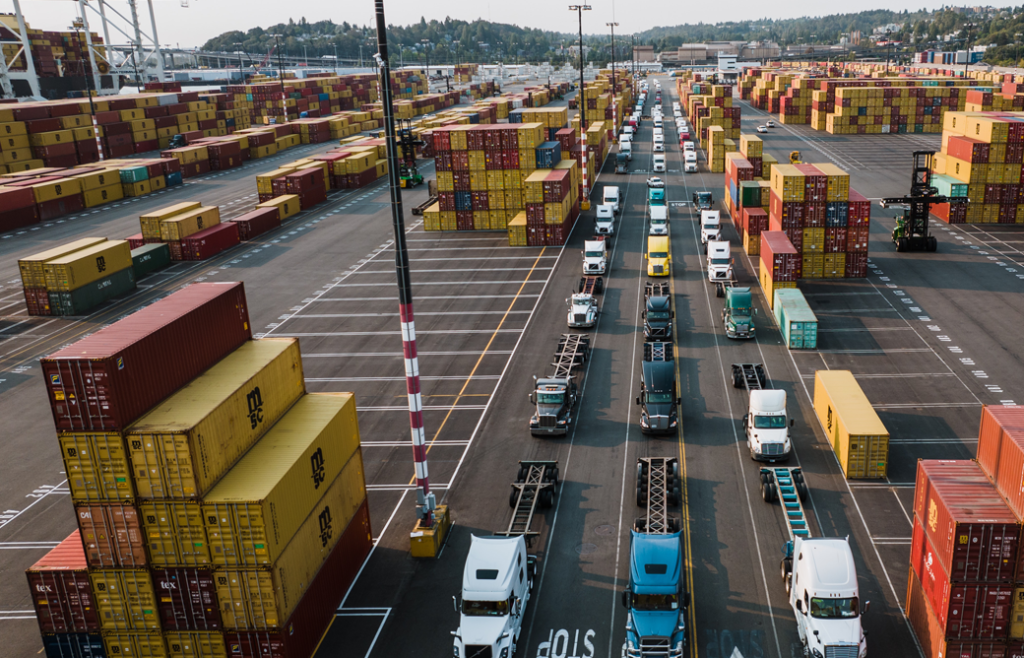
Safety and Regulations: Ensuring Secure Drone Freight Delivery in the World of Freight Transportation
In the rapidly evolving world of freight transportation, the introduction of Drone Freight Delivery brings forth exciting possibilities. However, ensuring the safety and compliance of this innovative technology is paramount. In this blog post, we delve into the intricacies of safety measures and regulations governing drone freight delivery, addressing the challenges faced by the freight industry and establishing a secure framework for its future.
The Complex Landscape of Drone Freight Delivery
Drone freight delivery operates within a complex ecosystem, requiring a delicate balance between innovation and safety. To navigate this landscape effectively, stakeholders must be aware of the regulations that govern their operations. From local aviation authorities to international aviation organizations, a framework of rules and guidelines ensures the safe integration of drones into the world of Freight Transportation.
1. Compliance with Regulatory Bodies
To ensure safe operations, drone freight delivery companies must adhere to the guidelines set by regulatory bodies such as the Federal Aviation Administration (FAA) in the United States, Civil Aviation Authority (CAA) in the United Kingdom, and similar authorities worldwide. Compliance involves obtaining appropriate licenses and certifications, adhering to operational limitations, and maintaining records of flight activities.
2. Safety Measures and Risk Mitigation
To mitigate risks and maintain safe drone operations, robust safety measures are crucial. These may include:
- Pilot Training and Qualifications: Skilled and trained operators ensure responsible and competent handling of drones, minimizing the likelihood of accidents.
- Maintenance and Inspections: Regular maintenance checks and inspections of drones help identify potential issues and ensure their airworthiness.
- Collision Avoidance Systems: Employing advanced collision avoidance technologies, such as sensors and radar systems, helps prevent accidents and ensures the safety of both drones and other aircraft.
- Emergency Procedures: Developing and practicing emergency procedures ensures swift and effective response to unforeseen events, such as equipment malfunctions or adverse weather conditions.
3. Privacy and Data Security
As drones collect vast amounts of data during freight operations, maintaining privacy and data security becomes crucial. Companies must implement robust protocols to protect sensitive information, ensuring compliance with data protection regulations and respecting the privacy rights of individuals.
Safety and Regulatory Compliance Table
Here is a table summarizing key safety measures and regulatory aspects of drone freight delivery:
| Safety Measures and Regulations | Description |
|---|---|
| Compliance with Regulatory Bodies | Adhering to guidelines set by aviation authorities to ensure safe and compliant operations |
| Safety Measures and Risk Mitigation | Pilot training, maintenance checks, collision avoidance systems, and emergency procedures to minimize risks and accidents |
| Privacy and Data Security | Implementing protocols to protect sensitive data and ensure compliance with data protection and privacy regulations |
The Future of Safe Drone Freight Delivery
Drone freight delivery presents exciting opportunities for the freight industry, but safety and regulatory compliance are paramount. By adhering to the guidelines set by regulatory bodies, implementing robust safety measures, and safeguarding privacy and data security, stakeholders can build a framework that ensures the secure integration of drones into the world of Freight Transportation. As the industry evolves, embracing innovation while prioritizing safety will pave the way for a future where drone freight delivery plays a vital role in the global supply chain.

Unveiling the Technology Behind Drone Freight Delivery: Revolutionizing the World of Freight Transportation
Welcome to the captivating world of Drone Freight Delivery, where cutting-edge technology takes flight and transforms the landscape of the freight industry. In this blog post, we delve into the innovative technologies that power drone freight delivery, addressing the challenges faced by the industry and showcasing the remarkable advancements that are reshaping the future of Freight Transportation.
1. Drone Design and Payload Capacity
The success of drone freight delivery hinges on the design and payload capacity of these aerial vehicles. Drones used for freight transportation are engineered with robust materials, ensuring durability and stability during flights. They are equipped with powerful motors and efficient propulsion systems that allow them to carry substantial payloads, ranging from small packages to larger shipments.
2. Navigation Systems and Autonomous Capabilities
To navigate the complex airspace and reach their destinations with precision, drones rely on advanced navigation systems. These systems often integrate GPS technology, enabling accurate positioning and route planning. Additionally, drones may utilize obstacle detection sensors, cameras, and LiDAR (Light Detection and Ranging) technology to detect and avoid potential obstacles in real-time. Autonomous capabilities further enhance efficiency by allowing drones to operate with minimal human intervention.
3. Communication Networks and Control Centers
Drone freight delivery is facilitated by robust communication networks and control centers that ensure seamless operations. These networks enable real-time communication between the drones, ground control stations, and centralized management systems. Through reliable data transmission, drone operators can monitor flight parameters, receive live video feeds, and make necessary adjustments to optimize performance and safety.
4. Battery Technology and Flight Range
The advancements in battery technology play a vital role in extending the flight range and duration of drone freight delivery. Lithium-ion batteries, for example, provide high energy density, allowing drones to cover significant distances before requiring recharging. Continuous research and development in this area aim to enhance battery efficiency and capacity, ultimately extending the range and capabilities of drones for freight transportation.
Technology Behind Drone Freight Delivery Table
Here is a table summarizing key technologies behind drone freight delivery:
| Technology | Description |
|---|---|
| Drone Design and Payload Capacity | Robust design and payload capabilities enable drones to carry various sizes of shipments, adapting to the needs of freight transportation |
| Navigation Systems and Autonomous Capabilities | Advanced navigation systems and autonomous features allow drones to navigate airspace and avoid obstacles with precision |
| Communication Networks and Control Centers | Reliable communication networks and control centers enable real-time monitoring and coordination of drone operations |
| Battery Technology and Flight Range | Advancements in battery technology extend flight range and duration, pushing the boundaries of drone freight delivery capabilities |
Embracing the Future of Freight Transportation
The technology behind drone freight delivery is at the forefront of revolutionizing the world of Freight Logistics. As drone designs evolve, navigation systems become more sophisticated, communication networks strengthen, and battery technology advances, the potential for efficient and secure freight transportation expands. The integration of drones with traditional modes of transportation, such as Sea Freight and Air Freight, creates a seamless and interconnected logistics network. Get ready to soar into the future as drone freight delivery redefines the boundaries of possibility in the world of freight transportation.
Navigating Operational Challenges and Unleashing Solutions in Drone Freight Delivery
In the dynamic realm of Drone Freight Delivery, operational challenges are ever-present, demanding creative solutions that push the boundaries of the Freight Industry. This blog post explores the hurdles faced in this exhilarating field and unveils innovative strategies that overcome these obstacles, propelling the world of Freight Transportation into a new era of efficiency and success.
1. Last-Mile Delivery: Conquering the Final Frontier
Last-Mile Delivery poses a significant challenge in the logistics landscape, but drones offer a breakthrough solution. These agile aerial vehicles can navigate congested urban areas and reach remote locations with ease, bypassing traffic and minimizing delivery times. By leveraging drones for last-mile delivery, freight forwarders can ensure swift and reliable transport, enhancing customer satisfaction and streamlining operations.
2. Cold Chain Logistics: Ensuring Temperature Integrity
Maintaining temperature control is crucial, especially in Cold Chain Logistics where perishable goods are involved. Drones equipped with specialized cooling systems and real-time monitoring sensors ensure the integrity of temperature-sensitive shipments throughout their journey. From pharmaceuticals to fresh produce, drones provide a seamless and efficient solution, safeguarding the quality of goods and reducing waste.
3. Freight Transportation Security: Mitigating Risks
Security concerns loom large in the freight industry, but drone freight delivery introduces measures to address these issues effectively. Drones equipped with advanced surveillance cameras and GPS tracking systems enhance Freight Transportation Security, enabling real-time monitoring and deterrence against theft or unauthorized access. Additionally, encrypted communication channels and geofencing technologies ensure secure operations and protect sensitive cargo.
4. Optimization of Freight Logistics: Streamlining Operations
Efficient management of freight logistics is key to success. By embracing Digital Freight Forwarding and advanced data analytics, drone freight delivery optimizes routing, resource allocation, and demand forecasting. Real-time tracking and intelligent algorithms help minimize fuel consumption, reduce delivery costs, and improve overall operational efficiency. This integration of technology and logistics expertise empowers freight forwarders to navigate complex challenges and achieve unparalleled results.
Operational Challenges and Solutions Table
Here is a table summarizing key operational challenges and their corresponding solutions in drone freight delivery:
| Operational Challenges | Solutions |
|---|---|
| Last-Mile Delivery | Leveraging drones to swiftly navigate congested areas and reach remote locations, ensuring efficient and timely deliveries |
| Cold Chain Logistics | Equipping drones with cooling systems and real-time monitoring to maintain temperature integrity of perishable shipments |
| Freight Transportation Security | Implementing advanced surveillance, GPS tracking, and encryption technologies to enhance security and deter theft |
| Optimization of Freight Logistics | Embracing digital freight forwarding, data analytics, and real-time tracking to streamline operations and improve efficiency |
Unlocking the Future of Drone Freight Delivery
Operational challenges in drone freight delivery present remarkable opportunities for innovation and growth. By conquering last-mile delivery, ensuring temperature integrity, enhancing security measures, and optimizing freight logistics, the potential of this technology in the Freight Industry becomes boundless.
As Freight Forwarders embrace these solutions, they propel the industry forward, ushering in a new era of efficient, secure, and sustainable freight transportation. Together, let’s unlock the full potential of drone freight delivery and shape the future of logistics.
Unleashing the Transformative Impacts of Drone Freight Delivery on the Logistics Industry
In the vast landscape of the Logistics Industry, the emergence of Drone Freight Delivery has set the stage for a revolution. This blog post dives into the transformative impacts that drones have on the industry, addressing key challenges, and unlocking new possibilities in Freight Transportation. From Cold Chain Logistics to Last-Mile Delivery, we explore how this innovative technology reshapes the World of Freight Transportation.
1. Accelerating Last-Mile Delivery
The last leg of delivery often poses significant challenges, but drones soar above these obstacles. With their ability to bypass traffic congestion and navigate through urban environments with ease, drone freight delivery transforms Last-Mile Delivery. By swiftly reaching the final destination, drones ensure prompt and efficient delivery, delighting customers and enhancing the overall logistics process.
2. Revolutionizing Cold Chain Logistics
In the realm of Cold Chain Logistics, maintaining temperature control is critical. Drones equipped with advanced cooling systems and temperature sensors enable precise monitoring and control throughout the transportation process. This revolutionizes the handling of perishable goods, such as pharmaceuticals and fresh produce, ensuring their integrity and extending their shelf life.
3. Enhancing Freight Transportation Security
Freight transportation security is a paramount concern for the logistics industry. Drones bring a new dimension to Freight Transportation Security by offering real-time monitoring capabilities and advanced surveillance systems. With aerial views and high-resolution cameras, drones help detect vulnerabilities and mitigate risks, providing an additional layer of protection for valuable cargo.
4. Streamlining Freight Logistics Operations
Digital innovation plays a vital role in streamlining freight logistics operations. The rise of Digital Freight Forwarding enables seamless communication, efficient documentation, and real-time tracking. Drones integrate into this digital landscape, further optimizing operations by providing rapid data collection and analytics. By harnessing this synergy, Freight Forwarders can make data-driven decisions and optimize resource allocation, ultimately reducing costs and enhancing overall efficiency.
Impacts on the Logistics Industry Table
Here is a table summarizing the transformative impacts of drone freight delivery on the logistics industry:
| Impacts | Description |
|---|---|
| Accelerating Last-Mile Delivery | Drones navigate urban environments, bypassing traffic and ensuring swift delivery to the final destination |
| Revolutionizing Cold Chain Logistics | Advanced cooling systems and temperature sensors in drones maintain the integrity of perishable goods |
| Enhancing Freight Transportation Security | Real-time monitoring and surveillance capabilities of drones contribute to improved security and risk mitigation |
| Streamlining Freight Logistics Operations | Integration of drones into digital freight forwarding streamlines communication, tracking, and resource allocation |
Embracing the Future of Drone Freight Delivery
The impacts of drone freight delivery on the logistics industry are far-reaching, transforming the way goods are transported and delivered. By accelerating last-mile delivery, revolutionizing cold chain logistics, enhancing freight transportation security, and streamlining freight logistics operations, drones redefine the possibilities within the logistics realm.
As the industry embraces this technology, it opens doors to improved efficiency, customer satisfaction, and overall logistics performance. Embrace the power of drone freight delivery and soar into a future where innovation meets seamless logistics.

Exploring Future Prospects and Key Considerations in Drone Freight Delivery
Welcome to a captivating exploration of the future prospects and critical considerations in the realm of Drone Freight Delivery. As this groundbreaking technology continues to disrupt the Freight Industry, this blog post sheds light on the exciting possibilities that lie ahead. From Cold Chain Logistics to Last-Mile Delivery, we uncover the potential impact of drones on the World of Freight Transportation and highlight key considerations for successful implementation.
1. Unleashing the Potential of Last-Mile Delivery
The future of Last-Mile Delivery holds immense promise with drone freight delivery. As technology advances, drones will become more autonomous, efficient, and capable of handling larger payloads. Imagine a world where drones seamlessly navigate urban landscapes, safely dropping off packages at doorsteps and apartment complexes, revolutionizing the last leg of the delivery process.
2. Redefining Cold Chain Logistics
In the realm of Cold Chain Logistics, drones present an opportunity to redefine the transportation of temperature-sensitive goods. Future drones may feature enhanced cooling systems, precise temperature control, and even monitoring capabilities to ensure the integrity of perishable items. This evolution will enable the safe and efficient transport of pharmaceuticals, fresh produce, and other temperature-sensitive cargo.
3. Advancements in Freight Transportation Security
As drone freight delivery expands, so does the need for robust Freight Transportation Security measures. Future drones will likely integrate advanced technologies such as biometric authentication, tamper-proof packaging, and secure communication protocols. These enhancements will bolster cargo protection, deter theft, and ensure the secure transportation of valuable goods.
4. Integration of Drones in Digital Freight Forwarding
The future of drone freight delivery lies in seamless integration with Digital Freight Forwarding platforms. As data-driven decision-making becomes increasingly vital, drones will contribute real-time data on weather conditions, traffic patterns, and delivery routes. This integration will optimize resource allocation, improve supply chain visibility, and empower freight forwarders with enhanced operational insights.
Future Prospects and Considerations Table
Here is a table summarizing the future prospects and key considerations in drone freight delivery:
| Prospects and Considerations | Description |
|---|---|
| Unleashing the Potential of Last-Mile Delivery | Future drones will revolutionize last-mile delivery, bringing unprecedented speed, efficiency, and convenience |
| Redefining Cold Chain Logistics | Advanced cooling systems and precise temperature control in future drones will reshape the transportation of perishable goods |
| Advancements in Freight Transportation Security | Integration of cutting-edge security technologies will safeguard cargo and enhance overall freight transportation security |
| Integration of Drones in Digital Freight Forwarding | Seamless integration with digital platforms will optimize operations, improve supply chain visibility, and enable data-driven decision-making |
Embracing the Future of Drone Freight Delivery
The future prospects of drone freight delivery are brimming with potential. From transforming last-mile delivery and revolutionizing cold chain logistics to enhancing freight transportation security and seamlessly integrating with digital freight forwarding, drones are reshaping the world of freight transportation.
As this technology advances, it is crucial for stakeholders to consider regulatory frameworks, airspace management, public acceptance, and sustainability to ensure a safe and efficient future for drone freight delivery. By embracing innovation, collaboration, and forward-thinking strategies, we unlock the boundless possibilities of this transformative technology and propel the freight industry into a new era of success.
Frequently Asked Questions (FAQs)
How can drones be used in logistics?
Drones can be used in logistics to revolutionize various aspects of the supply chain. They enable efficient last-mile delivery, especially in hard-to-reach areas, reducing costs and delivery times. Drones equipped with sensors and cameras can also monitor inventory levels, track shipments in real-time, and perform aerial surveys for warehouse management. Additionally, drones can enhance safety and security by conducting inspections of infrastructure, identifying potential hazards, and improving overall logistics operations.
How is drone delivery done?
Drone delivery involves a well-orchestrated process. It begins with the order being received and processed by the logistics company. The package is then carefully packed, taking into consideration weight, size, and fragility. Once the package is ready, it is attached to the drone, and the drone takes off from a designated location. During the flight, the drone follows a predetermined route using GPS and other navigation systems. Finally, the drone lands at the recipient’s location and delivers the package safely.
What is a drone delivery system?
A drone delivery system is a comprehensive setup that encompasses various components and technologies to facilitate the delivery of packages by drones. It includes drones equipped with navigation systems, sensors, and cameras, as well as ground control stations and software for flight planning and monitoring. The system ensures seamless coordination between the logistics company, drone operators, and recipients, ensuring safe and efficient delivery of packages through autonomous or remotely controlled drones.
What is the rationale for drone delivery?
Drone delivery offers several compelling rationales. Firstly, it enables faster and more efficient delivery, particularly for last-mile logistics, reducing congestion and saving time. Secondly, drone delivery expands access to remote and inaccessible areas, bridging the logistics gap. It also reduces the reliance on traditional transportation methods, leading to cost savings and environmental benefits. Additionally, drone delivery systems can enhance safety and security by minimizing human involvement and providing real-time tracking, making it an appealing solution for the logistics industry.



